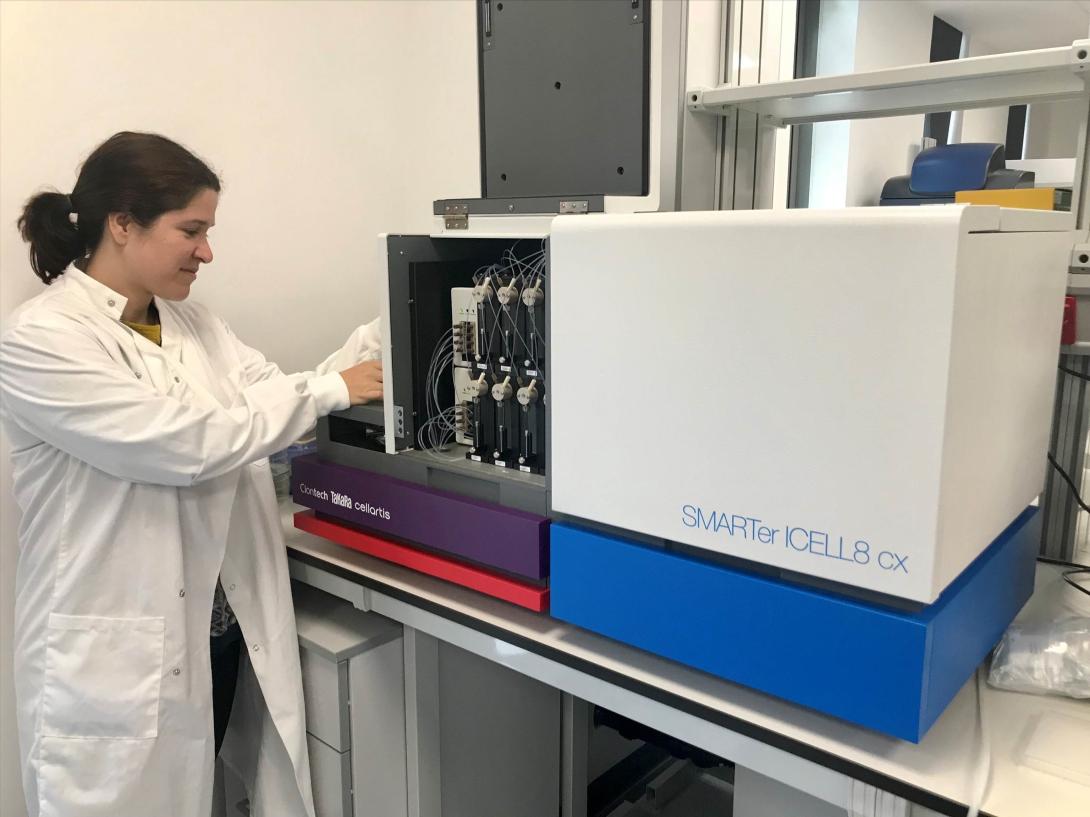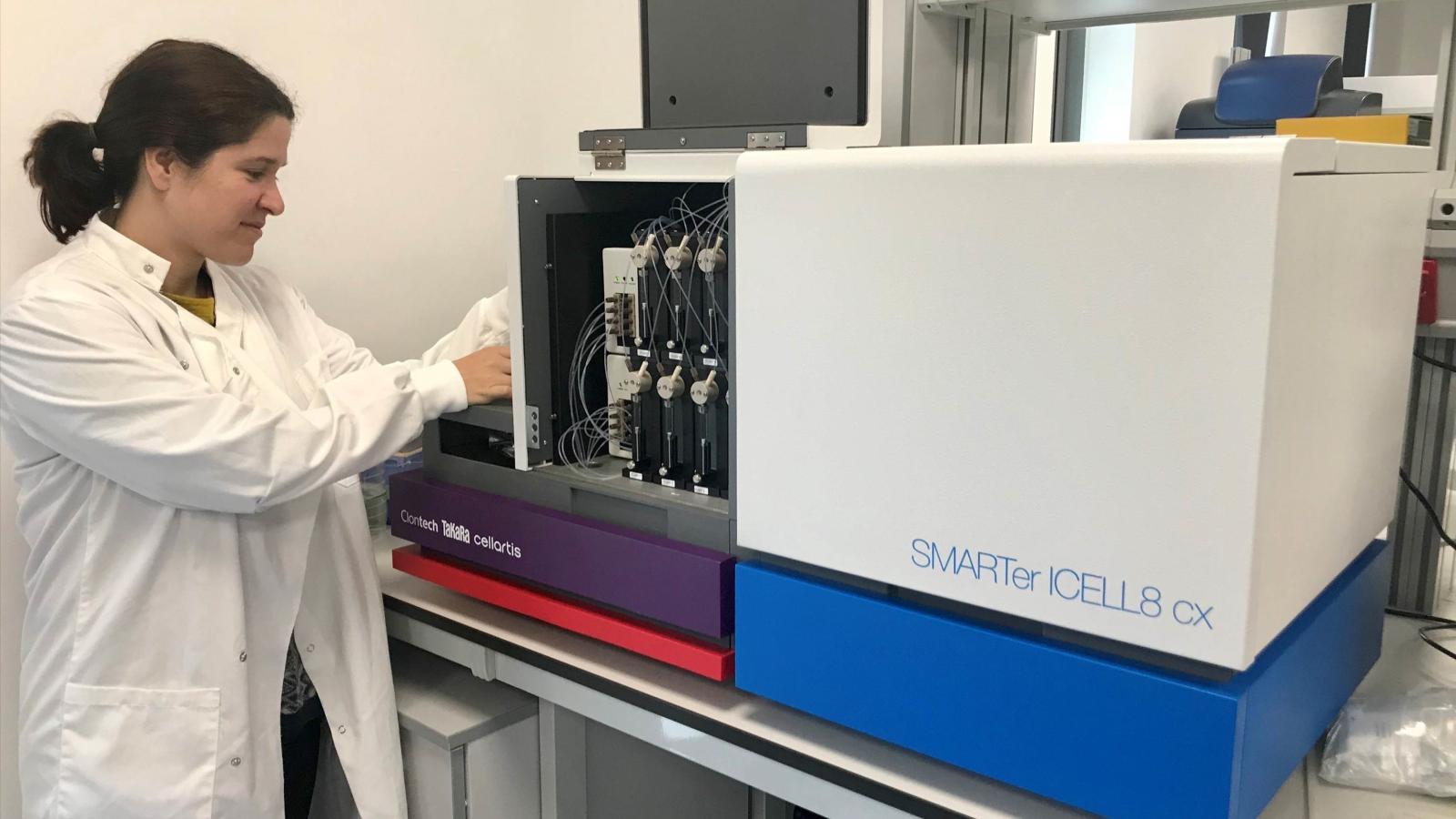The new SMARTer ICELL8cx Single-Cell Automation System is installed and ready to use at our UK DRI centre in Cardiff. This instrument will enable scientists to study individual neurons at high resolution and bring advances in dementia research.
We spoke to Professor Caleb Webber to hear what this big new piece of kit means and the hope it brings.
What does the new equipment let you do?
[CW] The TW ICell8 enables us to take a high resolution look inside individual cells to see which genes are switched on and which ones switched off.
What you hope you will learn about dementia through the machine?
[CW] In any population of cells, each cell isn’t doing exactly the same thing. For example, neurons are being lost in the brain in dementia but not all neurons in the brain are lost at the same time. When we study neurons that we make in our laboratories to try to understand dementia, some of those neurons are really struggling while others seem OK, similar to the brain. If we look at all the cells together, we average across them and we may miss what’s going wrong in a small number of neurons that could be important in understanding why neurons die. The TW ICell8 enables to look at individual cells to see what’s happening in those that seem OK and in those that are struggling.
Who will benefit from the new machine?
[CW] This machine is a huge investment only made possible by the UK DRI. The TW ICell8 is a key instrument of value to many groups in the UK DRI. The institute has brought together rare bioinformatics expertise to analyse the huge quantities of data that is focussed on understanding and helping people with dementia.
What could insight from the new machine ultimately mean for patients?
[CW] Understanding the individual neurons that are struggling, working out what’s going wrong for them and then finding ways to help them is a key path to new treatments.

Single neuron analysis with the SMARTer ICELL8 cx Single-Cell System at the UK Dementia Research Institute at Cardiff University
